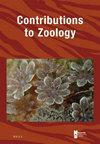中国不同海拔湖泊大水蚤(Daphnia magna,甲壳类)的谱系多样性、形态和遗传差异
IF 2.2
2区 生物学
Q1 ZOOLOGY
引用次数: 9
摘要
在东北极,特别是青藏高原,水生浮游动物种群的生物地理学和遗传结构仍然研究不足。在这里,我们探索了在中国8个(303个调查对象中)水体中发现的大型枝角水蚤Daphnia magna的种群遗传多样性和结构。三个西藏大型D.magna种群是在一个小的地理区域内发现的,这表明这些种群是从避难所扩展而来的。我们在中国发现了两个不同的大型D.magna线粒体谱系:一个局限于青藏高原,另一个存在于中国低地。青藏高原的几种不同单倍型与西伯利亚各地的单倍型最为相似,表明这是一个来源区。我们还发现青藏高原和中国低地的大型D.magna种群之间存在显著的遗传分化。此外,还发现了显著的形态差异:青藏高原的大型D.magna比中国低地的大型D.agna具有更大的头部长度、身体长度和身体宽度。地理和环境因素与观察到的中国大型D.magna的形态变异和遗传分化有关。我们的数据深入了解了青藏高原隆起导致的淡水浮游动物的分化。本文章由计算机程序翻译,如有差异,请以英文原文为准。
Lineage diversity, morphological and genetic divergence in Daphnia magna (Crustacea) among Chinese lakes at different altitudes
The biogeography and genetic structure of aquatic zooplankton populations remains understudied in the Eastern Palearctic, especially the Qinghai-Tibetan Plateau. Here, we explored the population-genetic diversity and structure of the cladoceran waterflea Daphnia magna found in eight (out of 303 investigated) waterbodies across China. The three Tibetan D. magna populations were detected within a small geographical area, suggesting these populations have expanded from refugia. We detected two divergent mitochondrial lineages of D. magna in China: one was restricted to the Qinghai-Tibetan Plateau and the other was present in lowland China. Several different haplotypes in the Qinghai-Tibetan Plateau were most similar to those from various parts of Siberia, suggesting that as a source region. We also found substantial genetic differentiation between D. magna populations from the Qinghai-Tibetan Plateau and those from lowland China. Moreover, significant morphological differences were identified: D. magna from the Qinghai-Tibetan Plateau had a larger head length, body length and body width than did those from lowland China. Geographical and environmental factors were correlated with the observed morphological variation and genetic divergence of D. magna in China. Our data offer an insight into the divergence of freshwater zooplankton due to the uplift of the Qinghai-Tibetan Plateau.
求助全文
通过发布文献求助,成功后即可免费获取论文全文。
去求助
来源期刊

Contributions to Zoology
生物-动物学
CiteScore
4.00
自引率
4.50%
发文量
16
审稿时长
>12 weeks
期刊介绍:
Contributions to Zoology solicits high-quality papers in all systematics-related branches of comparative zoology (including paleozoology). Preference will be given to manuscripts dealing with conceptual issues and to integrative papers (e.g., ecology and biodiversity, morphology and phylogeny and character state evolution, phylogeny and historical biogeography, systematics and bioinformatics, bioinformatics and biodiversity, habitat disturbance and biogeography, etc.). Reviews and alpha-taxonomic contributions are considered for publication, but acceptance will depend on their high quality and exceptional nature.
 求助内容:
求助内容: 应助结果提醒方式:
应助结果提醒方式:


